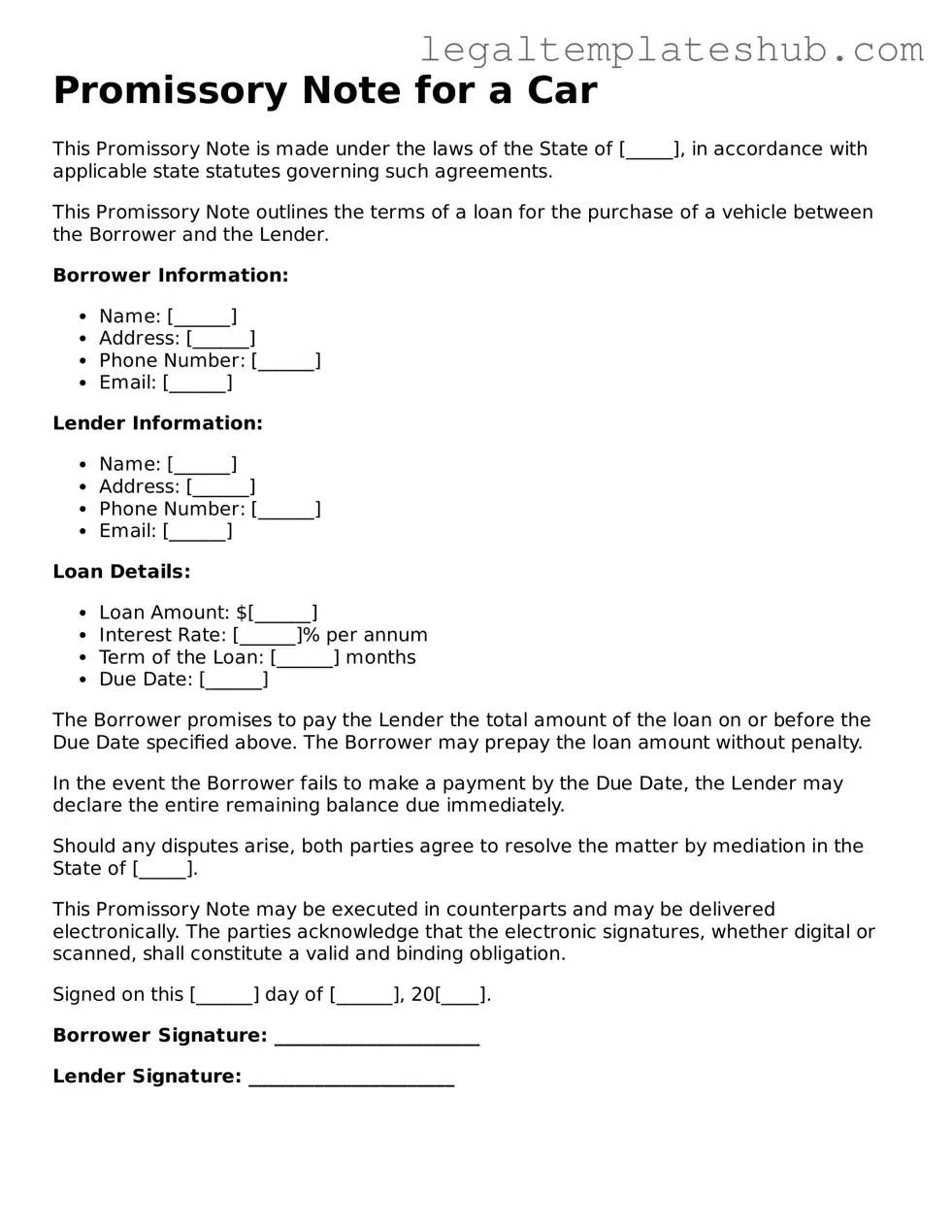Printable Promissory Note for a Car Template
A Promissory Note for a Car is a legal document that outlines a borrower's promise to repay a loan for a vehicle. This form details the terms of the loan, including the amount borrowed, interest rate, and payment schedule. Ready to secure your vehicle financing? Fill out the form by clicking the button below.
Access Editor
